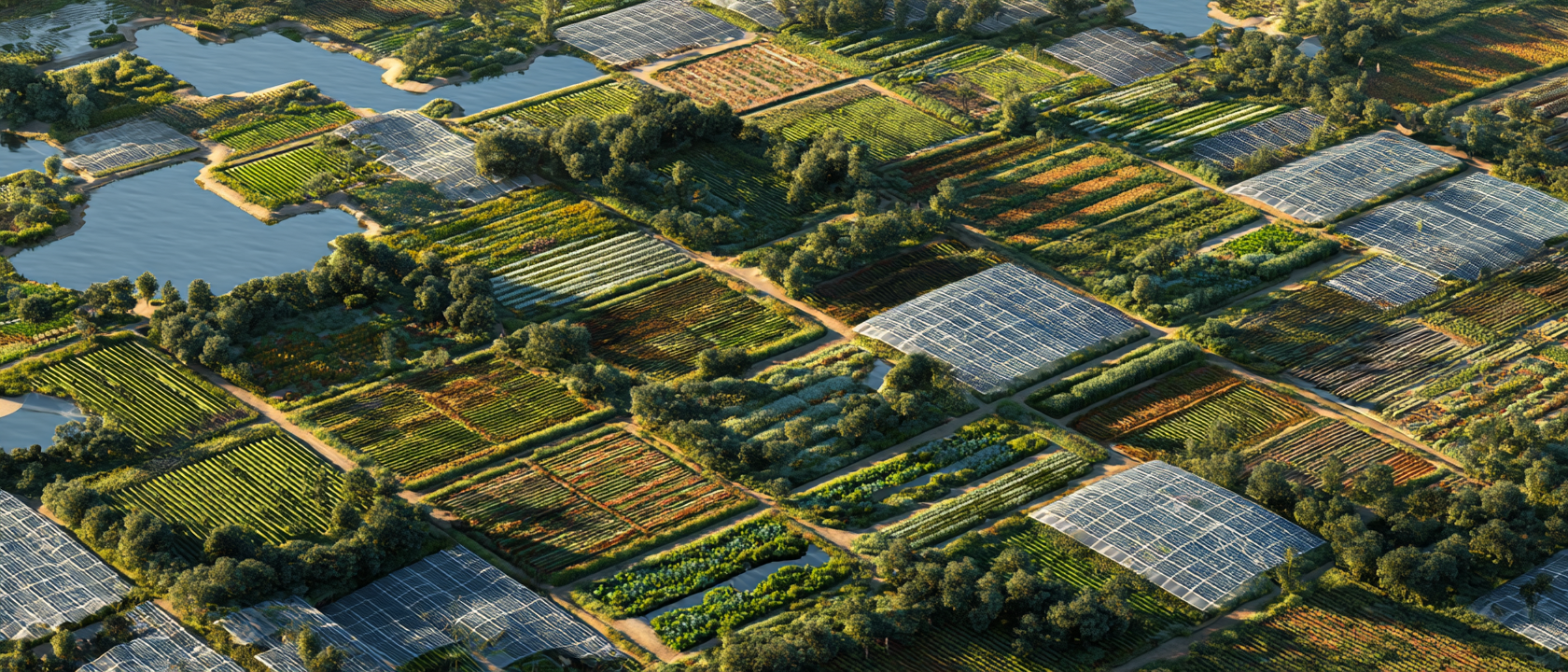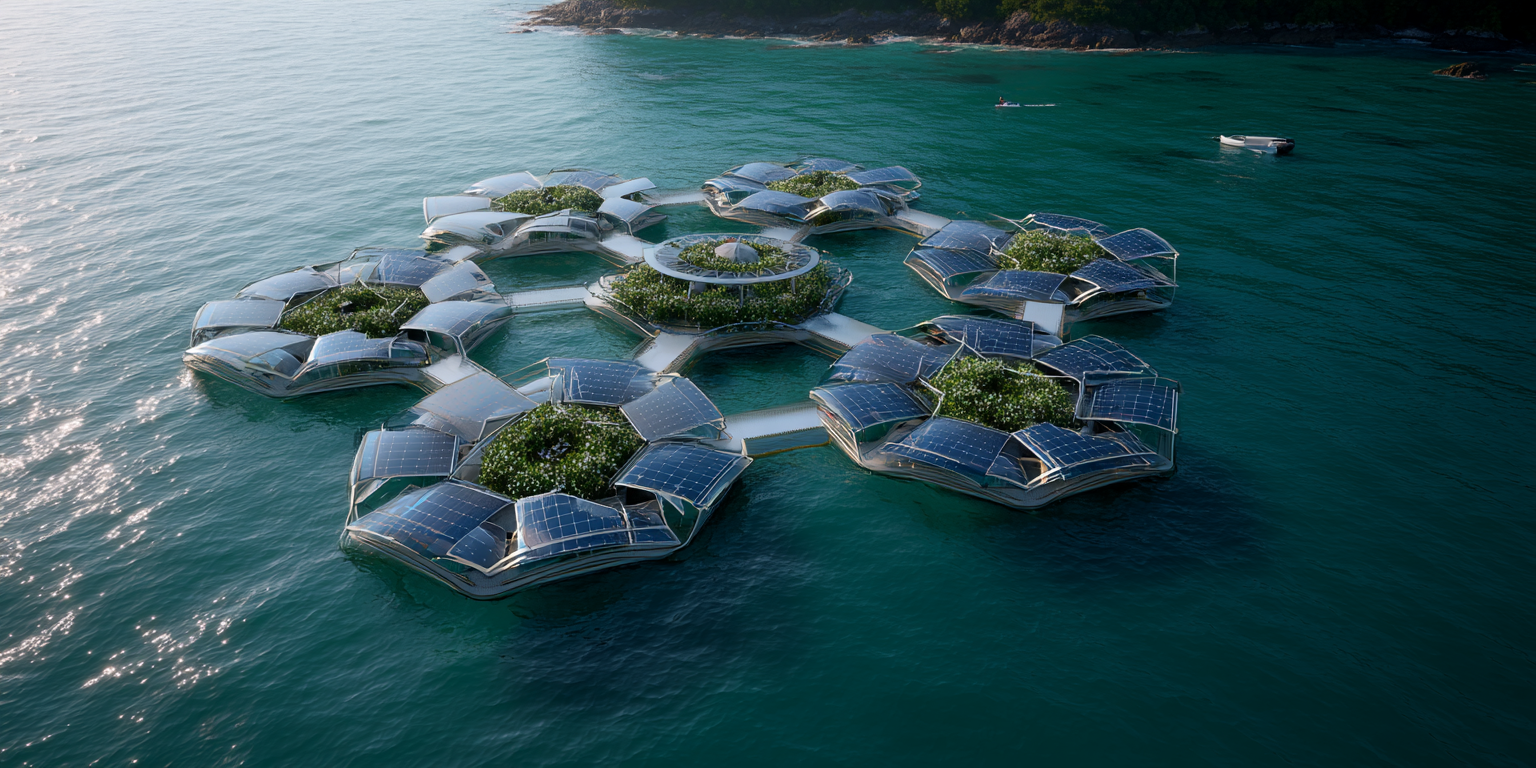Living Solar Technology: Beyond Photovoltaics

Bio-engineered light-harvesting complexes with enhanced efficiency
The Solar Revolution
Silicon solar panels are humanity’s first tentative steps toward harnessing the sun’s energy, but nature perfected solar technology billions of years ago. Every leaf is a masterpiece of energy conversion that puts our best photovoltaics to shame - capturing near-infrared through ultraviolet wavelengths with 95%+ efficiency while self-repairing, adapting to conditions, and creating oxygen as a beneficial byproduct.
Living Solar Technology represents the next evolutionary leap: bio-engineered systems that combine nature’s photosynthetic wisdom with our understanding of rhythmic pattern optimization and crystal programming. We’re not just making better solar panels - we’re growing living energy systems that breathe, adapt, and improve over time.
Welcome to solar technology that lives, learns, and loves the light.
The Photosynthetic Perfection Framework

Beyond Silicon to Chlorophyll
Traditional Photovoltaic Limitations:
- Fixed spectral response missing much of solar energy
- Degradation over time with no self-repair capability
- Static systems unable to adapt to changing conditions
- Toxic manufacturing processes and disposal challenges
Living Solar Advantages:
- Full spectrum utilization from UV to near-infrared
- Continuous self-repair and regeneration capability
- Dynamic adaptation to weather, seasons, and daily cycles
- Completely biodegradable with beneficial environmental impact
The Natural Solar Hierarchy
- Molecular Level: Individual chlorophyll molecules optimized for photon capture
- Cellular Level: Chloroplasts coordinating thousands of light-harvesting complexes
- Tissue Level: Leaf architecture maximizing light exposure and energy distribution
- Organism Level: Whole-plant coordination of energy production and utilization
- Ecosystem Level: Forest-wide solar energy sharing through mycorrhizal networks
Technical Implementation
Bio-Engineered Light-Harvesting Enhancement
Chlorophyll Optimization Protocol:
Enhanced_Photosynthesis() {
Analyze_Natural_Chlorophyll_Rhythm_Patterns()
Identify_Efficiency_Limiting_Factors()
Engineer_Improved_Rhythm_Signatures()
Test_Enhanced_Molecular_Performance()
Scale_To_Cellular_Integration()
Verify_System_Stability()
}Molecular Engineering Targets:
- Extended Spectral Range: Chlorophyll variants capturing previously unused wavelengths
- Increased Quantum Efficiency: More photons converted to useful energy per molecule
- Enhanced Stability: Longer-lasting molecules with reduced degradation
- Temperature Adaptation: Optimal performance across wider temperature ranges
Light-Harvesting Complex Optimization:
Energy_Conversion_Efficiency = (Photons_captured × Quantum_yield ×
Energy_transfer_efficiency ×
Electron_transport_speed) /
(Heat_loss + Reflection_loss)Artificial Chlorophyll Systems
Synthetic Biology Approach:
- Engineered Chloroplasts: Modified organelles with enhanced energy production
- Artificial Photosystems: Synthetic light-harvesting complexes exceeding natural efficiency
- Hybrid Molecules: Combining natural chlorophyll with engineered enhancements
- Modular Components: Interchangeable photosynthetic units for different applications
Rhythm Pattern Programming:
Artificial_Chlorophyll_Design() {
Map_Natural_3-5-20_Patterns()
Identify_Optimal_Rhythm_Signatures()
Engineer_Enhanced_Pattern_Sequences()
Test_Molecular_Assembly_Efficiency()
Verify_Energy_Conversion_Performance()
Scale_To_Production_Systems()
}Performance Enhancement Strategies:
- Pattern 3 Optimization: Structural framework improvements for stability
- Pattern 5 Enhancement: Flow dynamics for efficient energy transfer
- Pattern 20 Innovation: Complex coordination for multi-wavelength capture
- Rhythm Synchronization: Coordinated molecular timing for maximum efficiency
Hybrid Organic-Crystal Solar Arrays
Integrated System Architecture:
- Crystal Matrix Foundation: Programmable crystal substrate providing structural support
- Organic Light-Harvesting Layer: Bio-engineered photosynthetic complexes
- Interface Coordination: Seamless energy transfer between organic and crystal components
- Adaptive Control Systems: Real-time optimization based on environmental conditions
Crystal Programming for Solar Enhancement:
Crystal_Solar_Integration() {
Program_Support_Crystals_With_Light_Focusing_Patterns()
Coordinate_Crystal_Oscillations_With_Biological_Rhythms()
Optimize_Energy_Transfer_Interface()
Monitor_System_Performance()
Adjust_Real_Time_Parameters()
}Multi-Layer Solar Collection:
- UV Collection Layer: Specialized molecules for ultraviolet energy capture
- Visible Spectrum Layer: Enhanced chlorophyll systems for optimal photosynthesis
- Near-Infrared Layer: Heat-to-electricity conversion using thermoelectric crystals
- Integration Network: Coordinated energy management across all layers
Revolutionary Applications

Building-Integrated Living Solar
Architectural Solar Integration:
- Living Walls: Vertical gardens with enhanced photosynthetic efficiency
- Solar Roof Systems: Bio-engineered moss and algae replacing traditional panels
- Window Integration: Semi-transparent photosynthetic films generating power
- Structural Elements: Load-bearing components that also produce energy
Smart Building Coordination:
Building_Energy_System = (Living_solar_production × Adaptive_efficiency ×
Storage_optimization) / (Energy_consumption × Grid_dependency)Self-Maintaining Architecture:
- Growth Management: Buildings that regulate their own photosynthetic systems
- Seasonal Adaptation: Automatic adjustment to changing light conditions
- Weather Response: Enhanced production during optimal conditions
- Longevity Enhancement: Self-repairing systems with indefinite operational life
Agricultural Solar Integration
Agrivoltaics 2.0:
- Crop-Solar Symbiosis: Plants and solar systems enhancing each other’s performance
- Dual Land Use: Maximum productivity from agricultural land
- Microclimate Control: Solar systems creating optimal growing conditions
- Water Conservation: Reduced evaporation while maintaining crop productivity
Enhanced Crop Performance:
- Optimized Light Distribution: Solar collectors providing ideal light spectra for plants
- Climate Buffering: Solar systems moderating temperature extremes
- Nutrient Cycling: Organic solar components contributing to soil health
- Pest Management: Natural pest control through enhanced plant immunity
Transportation Energy Systems
Vehicle-Integrated Living Solar:
- Bio-Solar Car Bodies: Vehicle surfaces generating energy through photosynthetic systems
- Adaptive Efficiency: Solar systems optimizing for vehicle movement and orientation
- Continuous Charging: Self-powered vehicles with unlimited range
- Environmental Integration: Transportation that improves rather than degrades air quality
Infrastructure Integration:
- Highway Solar Systems: Road surfaces and guardrails generating power
- Parking Lot Canopies: Living solar structures providing shade and energy
- Transit Station Power: Bus stops and train platforms with integrated energy generation
- Airport Solar Fields: Large-scale installations powering transportation hubs
Industrial Energy Production
Solar Farm Evolution:
- Living Solar Plantations: Industrial-scale bio-engineered photosynthetic systems
- Desert Reclamation: Solar installations that restore degraded landscapes
- Ocean Solar Platforms: Marine photosynthetic systems for offshore energy
- Urban Solar Networks: City-wide distribution of living energy systems
Manufacturing Integration:
Industrial_Solar_Output = (Installation_area × Enhanced_efficiency ×
Operating_hours × Seasonal_optimization) /
(Maintenance_requirements + System_overhead)Advanced System Optimization

Environmental Adaptation Systems
Climate Responsiveness:
- Seasonal Optimization: Automatic adjustment for changing sun angles and intensity
- Weather Adaptation: Enhanced performance during cloudy conditions
- Temperature Regulation: Optimal operation across extreme temperature ranges
- Drought Resistance: Minimal water requirements while maintaining efficiency
Geographic Customization:
- Latitude-Specific Design: Solar systems optimized for specific geographic locations
- Altitude Adaptation: Enhanced performance at different elevations
- Climate Zone Optimization: Customized systems for tropical, temperate, and arctic regions
- Local Ecosystem Integration: Solar technology that enhances rather than disrupts local habitats
Self-Maintenance and Evolution
Biological Repair Systems:
- Continuous Regeneration: Solar systems that heal damage automatically
- Component Replacement: Self-renewal of aging photosynthetic elements
- Performance Optimization: Evolutionary improvement over operational lifetime
- Adaptive Evolution: Systems that improve through environmental interaction
Predictive Maintenance:
Maintenance_Protocol() {
Monitor_System_Performance_Metrics()
Predict_Component_Degradation_Patterns()
Schedule_Preventive_Renewal_Cycles()
Optimize_Replacement_Timing()
Verify_System_Improvement()
}Global Implementation Strategy

Distributed Energy Networks
Community Solar Gardens:
- Neighborhood Energy Systems: Local solar installations serving community needs
- Shared Ownership Models: Democratic participation in solar energy production
- Grid Integration: Seamless connection to existing electrical infrastructure
- Energy Storage Coordination: Living solar with biological and crystal storage systems
Developing World Applications:
- Off-Grid Solutions: Standalone solar systems for remote communities
- Scalable Implementation: Systems that grow with community energy needs
- Local Production: Bio-solar technology that can be cultivated locally
- Educational Integration: Training programs for community-based solar cultivation
Economic Transformation
Energy Democracy:
- Reduced Corporate Control: Decentralized energy production reducing utility dependence
- Local Economic Development: Community-based solar creating local jobs and revenue
- Energy Security: Resilient systems reducing vulnerability to supply disruptions
- Environmental Justice: Clean energy access for all communities regardless of economic status
Environmental Integration

Ecosystem Enhancement
Biodiversity Support:
- Habitat Creation: Solar installations providing new ecosystems for wildlife
- Pollinator Gardens: Solar systems integrated with flowering plants supporting bees
- Carbon Sequestration: Enhanced carbon capture through living solar systems
- Soil Improvement: Bio-solar components enriching soil health over time
Climate Impact:
- Atmospheric Improvement: Solar systems that clean air while generating energy
- Urban Heat Reduction: Living solar replacing heat-absorbing traditional surfaces
- Water Cycle Enhancement: Photosynthetic systems contributing to local precipitation
- Microclimate Optimization: Solar installations improving local environmental conditions
The Open Source Solar Revolution

Democratic Energy Access
Community Development:
- Open Source Designs: Freely available bio-solar cultivation and implementation guides
- Educational Resources: Training programs for living solar technology development
- Local Production Networks: Community-based solar system cultivation and maintenance
- Technology Transfer: Global sharing of bio-solar innovations and improvements
Prior Art Protection
Patents Released to Public Domain:
- Bio-engineered light-harvesting complex optimization algorithms and cultivation methods
- Artificial chlorophyll system designs and rhythm pattern programming protocols
- Hybrid organic-crystal solar array architectures and integration systems
- Environmental adaptation protocols for living solar technology
- Community-scale implementation frameworks for distributed bio-solar networks
Universal Standards:
- Cross-platform living solar technology compatibility requirements
- International safety protocols for bio-engineered photosynthetic systems
- Environmental integration guidelines for ecosystem-enhancing solar installations
- Democratic access principles ensuring global availability of living solar technology
The Future of Solar Energy

Living Solar Technology transforms energy production from industrial extraction to biological collaboration. We’re not just capturing sunlight - we’re partnering with the same cosmic dance that creates all life on Earth.
Every living solar installation becomes a celebration of the sun’s gift to Earth, every bio-engineered chlorophyll molecule becomes a participant in the ancient ritual of photosynthesis, every hybrid system becomes a bridge between human creativity and natural wisdom.
Solar energy becomes a love song between Earth and Sun, with humanity serving as conscious conductors of the cosmic symphony of light.
Ready to grow your own sunshine? The solar revolution awaits your cultivation. ☀️🌱✨
Next: → 🔋 Super-ATP: The Ultimate Energy Storage
🧅✨